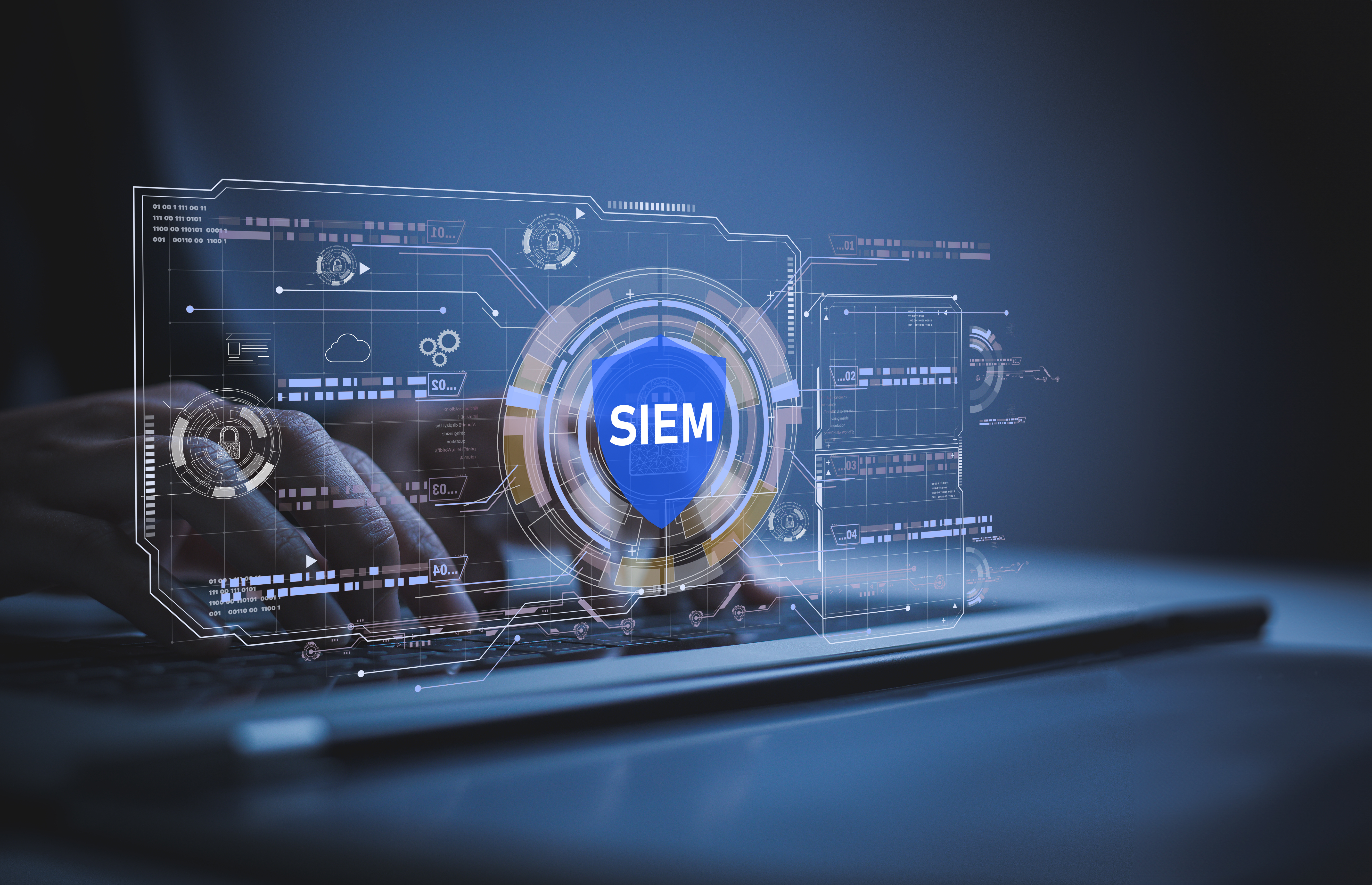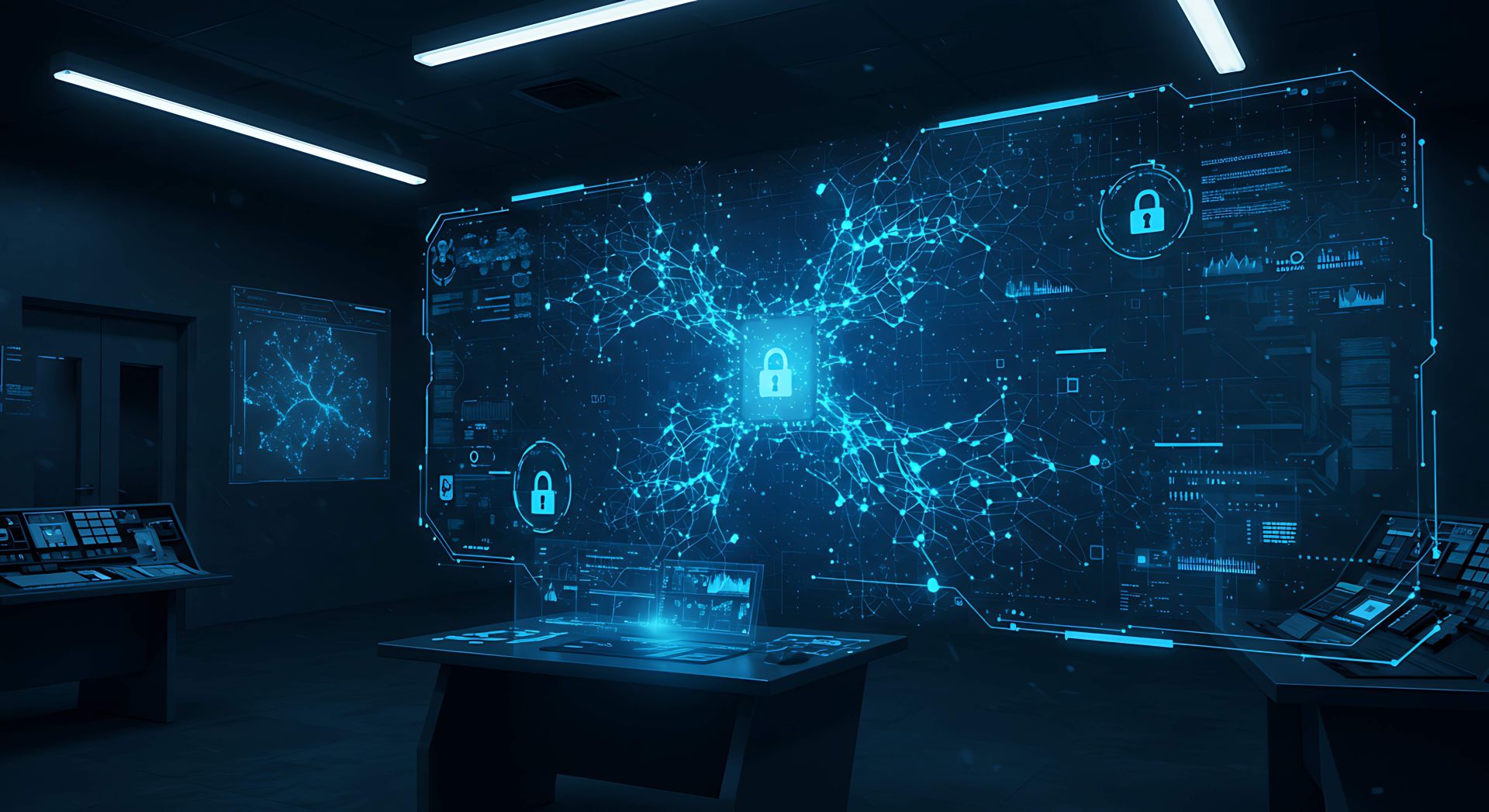Every day, your IT systems generate millions of logs. Hidden among them are clues about attacks that could paralyze your business. But can anyone make sense of all that? It turns out they can – but not by human effort alone. A system is needed for this, and that’s where SIEM (Security Information and Event Management) comes in – the heart and brain of a SOC (Security Operations Center).
SIEM - the brain and heart of every SOC
Today, every organization has hundreds of data sources: from servers and business applications to network devices and cloud solutions. All of them generate a continuous stream of logs and alerts. The problem? No SOC analyst can review and interpret such an overwhelming amount of information alone.
According to Ponemon Institute, a medium-sized company generates over 10,000 security alerts daily, of which up to 45% go unanalyzed*. This isn’t science fiction – it’s the everyday reality of business. Organizations simply drown in data that could contain information about real attacks.
This is where SIEM comes to the rescue, centralizing and analyzing security data. It collects logs from across the entire infrastructure, organizes them, and then interprets them in the context of threats. Thanks to this, the SOC doesn’t get lost in the information chaos and can identify what truly matters.
„During conversations, our clients increasingly note that ongoing security monitoring is currently the best investment in business stability and growth“.
You already know what a SOC is and how does a SOC work daily. Now you can also see that without SIEM, a SOC would be like a pilot flying in the fog – blind to many threats, leaving the company exposed to numerous cyberattacks. SIEM provides the SOC with a complete picture of the situation and the ability to respond instantly.
What is SIEM and how does it help protect an organization?
If you are familiar with tools and technologies used in a SOC, it’s worth taking a closer look at the key functions of SIEM. SIEM is not just a tool for collecting data – it is a comprehensive system that supports organizational security on multiple levels:
- Log Collection – consolidates data from various IT systems, devices, and applications, creating a single, unified source of information.
- Event Correlation – connects seemingly independent incidents to detect complex attacks (e.g., linking an unusual login with a mass data transfer).
- Anomaly Detection – analyzes user and system behavior to identify deviations from the norm, allowing the SOC to respond to suspicious activities in real time.
- Reporting and Visualization – provides clear dashboards and reports that help security managers and analysts quickly understand the situation.
- Incident Response Support – modern SIEM systems integrate with automation tools and playbooks, reducing the SOC’s response time.
„SIEM is not just a monitoring tool. It is a system that combines analytics, automation, and business context. Thanks to it, the SOC can respond faster and more effectively“.
In other words, SIEM doesn’t just monitor – it actively protects the organization from cyberattacks.
Microsoft and modern SIEM - how Sentinel supports SOC
In the context of increasingly advanced threats, it is essential to use SIEM solutions that not only aggregate logs but also intelligently analyze data at scale. A good example of such a platform is Microsoft Sentinel – a cloud-native SIEM solution that, thanks to its seamless integration with modern security tools, provides SOC teams with a significant operational advantage in daily monitoring and incident response.
Microsoft Sentinel brings together data from both on-premises and cloud environments, simplifies event correlation and real-time threat detection, and offers extensive automation capabilities. This gives security analysts not only a complete view of the environment but also the tools needed to act faster and more effectively.
What’s more, Sentinel works hand in hand with other components of the Microsoft ecosystem, such as Defender XDR and Security Copilot. This means that the SIEM does not operate in isolation but becomes part of an integrated security environment. This synergy of tools allows SOC teams not only to identify incidents but also to proactively anticipate and neutralize threats before they can cause damage to the infrastructure.
Summary - what is SIEM and why is it the heart of a SOC?
SIEM is the foundation of an effective SOC. It gives meaning to data, connects the dots, and supports analysts in making fast decisions. Without SIEM, a Security Operations Center would not be able to operate efficiently or provide the organization with real protection against cyber threats.
If you want to see how it can support your business, check out our SOC service and discover why, in security, timing really matters.
_
Bibliography:
- https://www.ponemon.org/ [access: 25.11.2025r.]










